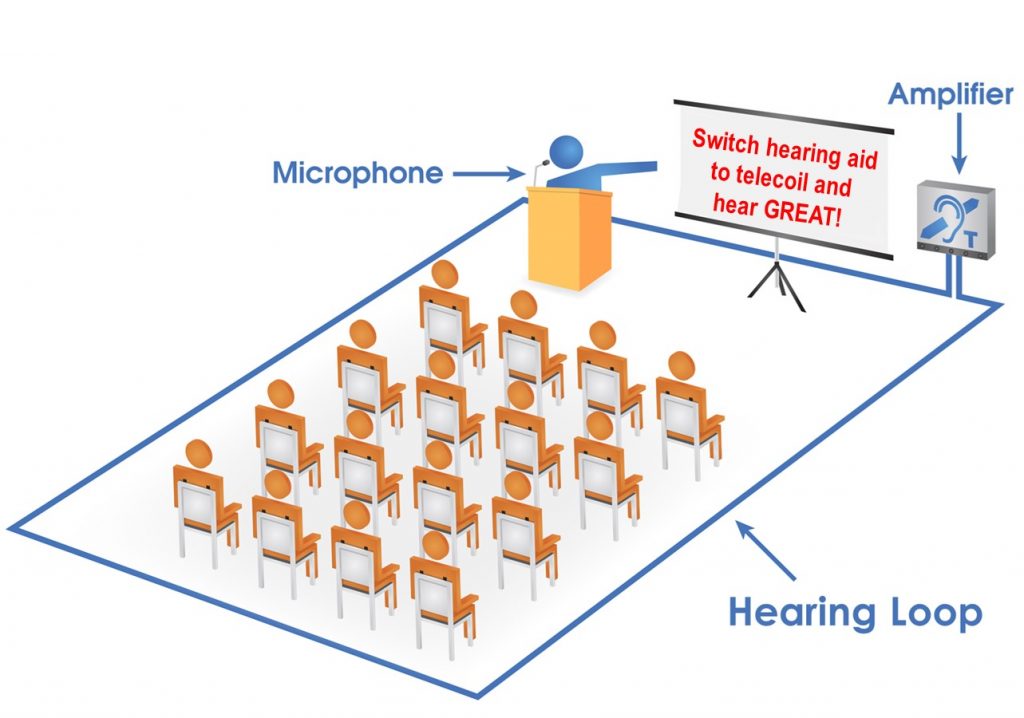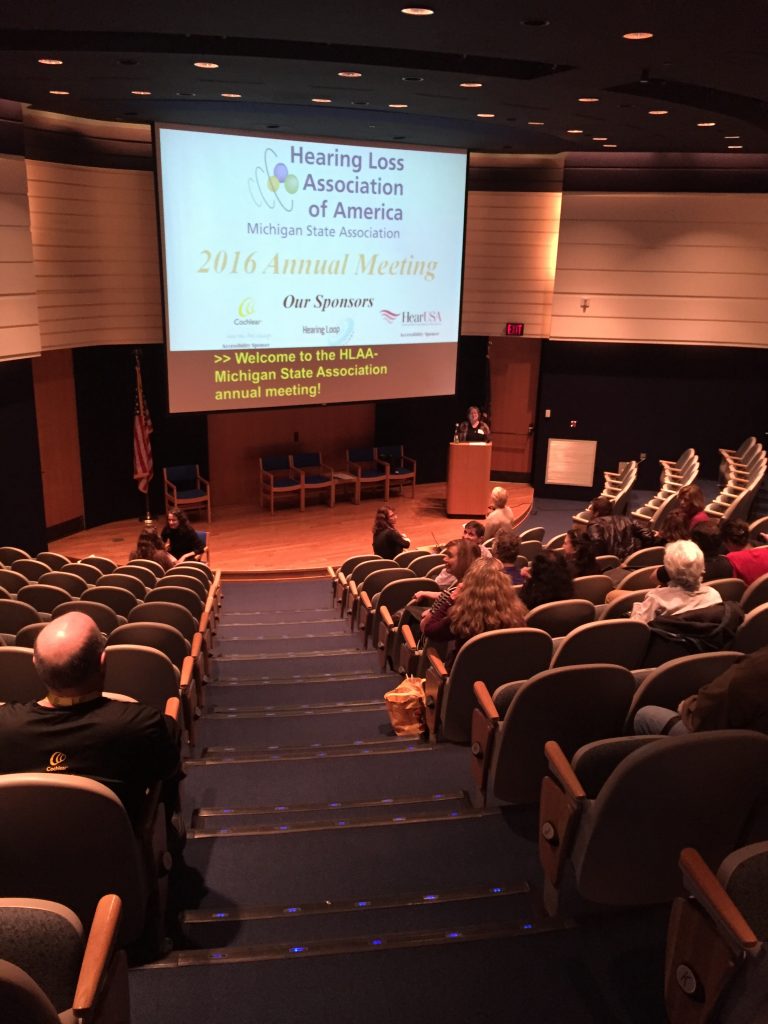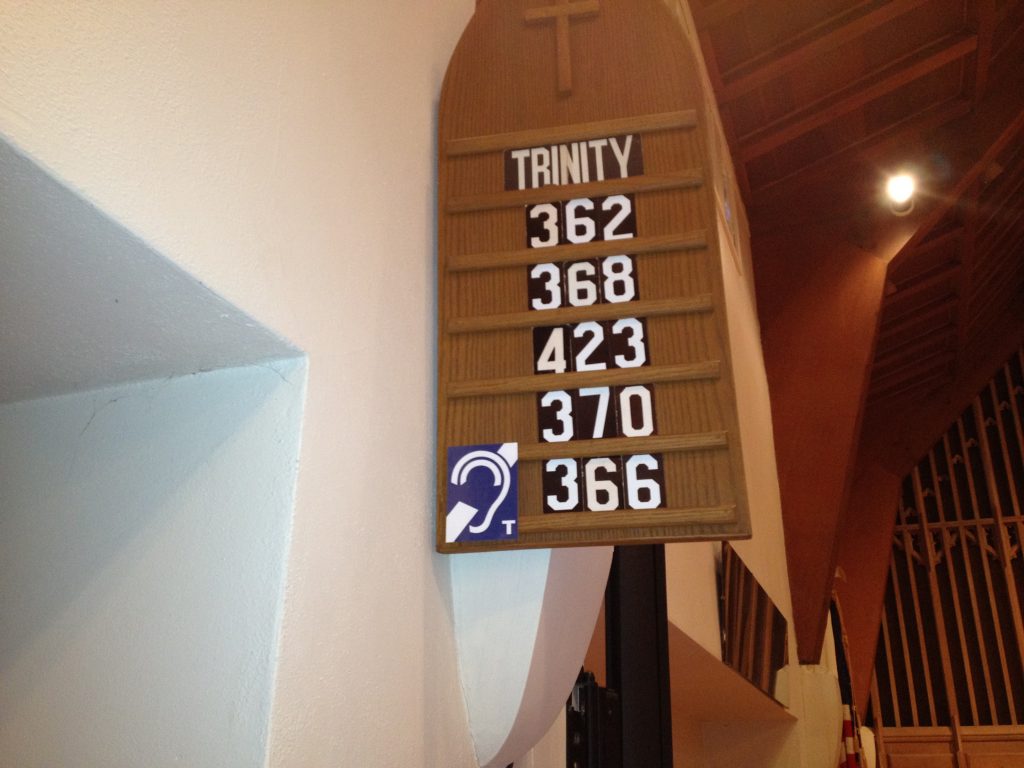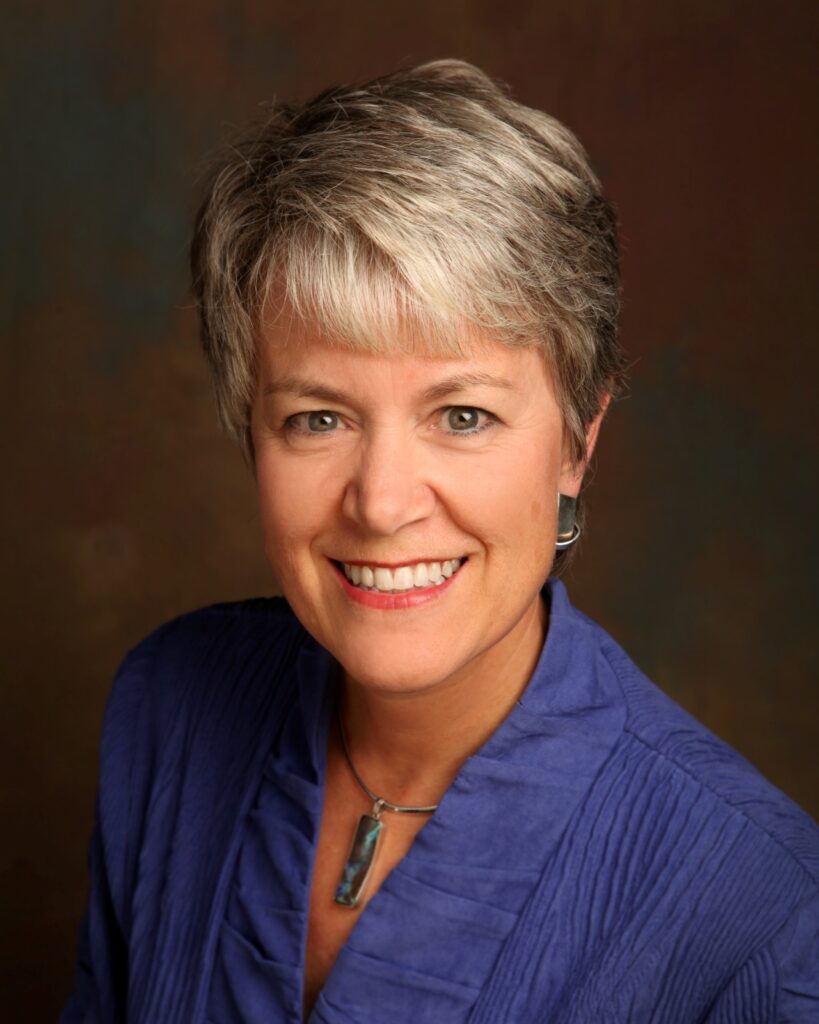What is a Hearing Loop and How Does It Work?
A hearing loop, previously known as an Audio Induction or Audio Loop, provides a magnetic, wireless signal that is picked up by the hearing aid when it is set to ‘T’ (Telecoil) setting. The loop system consists of a microphone to pick up the sound signal; an amplifier which processes the signal which is then sent through the final piece; the induction loop, a wire placed around the perimeter of a room or sanctuary to act as an antenna that radiates the magnetic signal to the hearing aid. When a hearing aid user selects the ‘T’ setting in the hearing aid or cochlear implant, he or she can pick up the sounds spoken into the PA system’s microphone directly into the hearing aids. Instead of hearing the sound transferred to the hearing instruments via small changes in the sound pressure in the air, the sound reaches the user’s telecoil via ripples in the magnetic field as long as the hearing device user is sitting in the looped area. The user hears the sound as if he or she is mere inches away from the microphone or the sound source. This results in greatly improved speech understanding because the listener receives a clear signal without any background noise. Even users with severe hearing loss rave about hearing loops – read testimonials here and read about a study about hearing loop benefits in the Hearing Review.

A hearing loop system transmits audio signals by means of electromagnetic energy to telecoil-equipped hearing aids, cochlear implants, or headset receivers via a wire that surrounds an audience.
Information for Churches
Information for Audiologist
Information for Libraries
LoopWisconsin
ALWAYS happy to HELP YOU foster hearing loops in your community.


How Can We Promote Hearing Loops?
01→ Increase public awareness:
It is up to audiologists and the users of hearing instruments to make others aware that hearing loops are out there and that they can greatly improve the lives of listeners who are hearing impaired. Clergy, church administrators, movie theater management, owners of banquet facilities, retirement homes to name a few, all need to know that most users of hearing aids can benefit from hearing loops and that they are by far the preferred assistive listening system that is out there today and hearing aid users want them installed.
02 → If you have benefited from a hearing loop in the past– ask for them by name when you experience hearing difficulty.
Click here for an advocacy card. Click here for a list of suggestions for audiologists on how to advocate for hearing loops. Click here for a list of suggestions for consumers on how to advocate for hearing loops. Watch a captioned webinar on how to foster hearing loops in a community: here. Share stories of how others have benefited from hearing loops. Click here for an article on hearing loops in Wisconsin Women magazine. It is our opinion that nothing will change unless you, the person who is having difficulty hearing, stands up, complains, and explains when s/he is having a problem. Do not “get by” or think that nothing can be done if you have difficulty hearing in a public place. If a microphone is used in a place with poor acoustics, a hearing loop will likely be of great help to you. To get to this brave new world where hearing loops are common, people must speak up. Print the advocacy card, carry it in your pocket. Give it to those businesses where you have problems hearing.
Thank you for visiting my website.
I will try to answer any questions you may have about hearing loops, hearing aids and telecoils. and how to loop your community. You can contact me via jsterkens@hearingloss.org or by clicking the link below.






